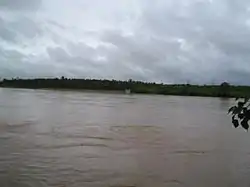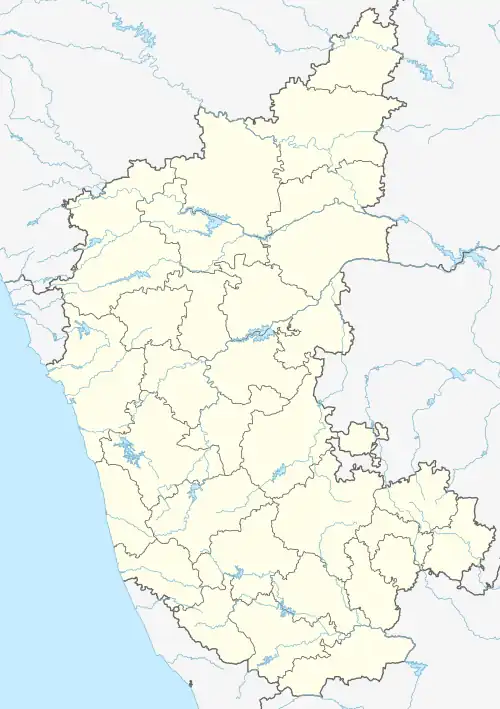Mattur
Mathur, Matthur, Mathoor | |
|---|---|
village | |
 The Tunga River at Mattur | |
| Nickname: Sanskrit village | |
 Mattur Location in Karnataka, India | |
| Coordinates: 13°52′26″N 75°33′32″E / 13.87389°N 75.55889°E | |
| Country | |
| State | Karnataka |
| District | Shivamogga district |
| Government | |
| • Body | Gram panchayat |
| Languages | |
| • Official | Kannada, Sanskrit |
| Time zone | UTC+5:30 (IST) |
| Nearest city | Shivamogga |

Mattur (or Mathoor) is a village in Shivamogga district near the city of Shivamogga in Karnataka state, India, known for the usage of Sanskrit for day-to-day communication, although the general language of the state is Kannada.[1][2] Mattur is known for Sanskrit Speaking Village of India. Their native language is Sankethi. Sankethi language is a mixure of Sanskrit, Tamil, Telugu and Kannada.
Mattur is located by the Tunga River around 4 kilometres from Shivamogga and has long been known as a centre of learning for Sanskrit and Vedic studies. According to copper plate inscriptions preserved by the archaeology department, Mattur along with neighbouring Hosahalli, were gifted to the people by the emperor of Vijayanagara in 1512.[3]
Sanskrit is the main language of a majority of the 5,000 residents of this village and is a required subject in schools. This rare trait received a significant boost in 1982 when Vishvesha Theertha, pontiff of Udupi's Pejawara Matha, visited the Mattur and dubbed it, "the Sanskrit village". The village has produced over 30 professors of Sanskrit who teach in universities across Karnataka.[3]
Mattur's twin village, Hosahalli, shares almost all the qualities of Mattur. Hosahalli is situated across the bank of the Tunga River. These two villages are almost always referred to together.[4] Mattur and Hosahalli are known for their efforts to support Gamaka art, which is a unique form of singing and storytelling in Karnataka.[5]
Mattur has traditionally been home to a community of Sanketi Brahmins but now includes Muslims, Lambanis, and backward classes among its residents.[3] It has a temple of Rama, a Shivalaya, Someshwara temple and Lakshmikeshava temple.
References
- ↑ Omkar Nath Koul, L. Devaki, Central Institute of Indian Languages, Unesco (2000). Linguistic heritage of India and Asia. Central Institute of Indian Languages. p. 247.
{{cite book}}: CS1 maint: multiple names: authors list (link) - ↑ Arvind Sharma (2005). New focus on Hindu studies. D.K. Printworld (P) Ltd. p. 65.
- 1 2 3 S. Kushala (13 August 2005). "This village speaks gods language!". The Times of India. Retrieved 3 May 2022.
- ↑ Rao, Subha J (2 March 2008). "Keeping Sanskrit alive". The Hindu. Retrieved 13 January 2017.
- ↑ "Sanskrit village set to glow anew". The Times of India. Retrieved 25 November 2016.